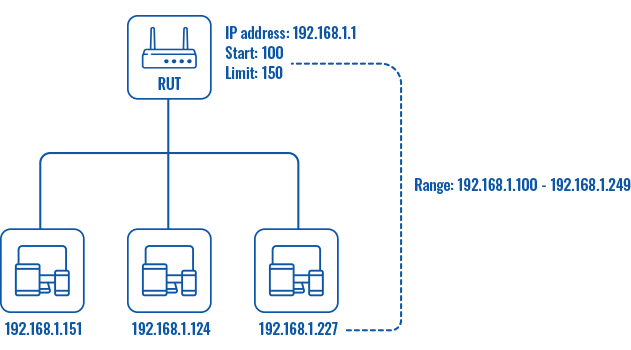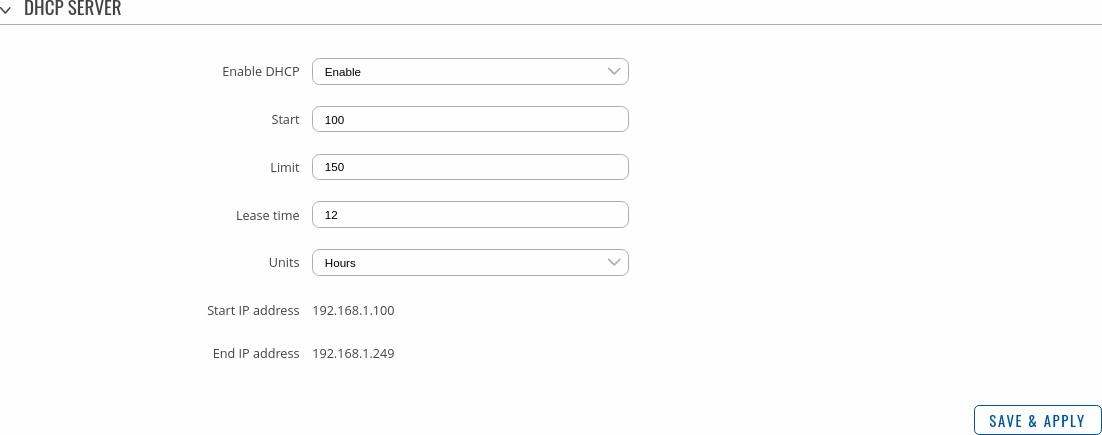Template:Networking rutos manual lan: Difference between revisions
Gytispieze (talk | contribs) No edit summary |
Gytispieze (talk | contribs) No edit summary |
||
| Line 18: | Line 18: | ||
{{#switch: {{{series}}} | {{#switch: {{{series}}} | ||
| TRB1|TRB5=[[File: | | TRB1=[[File:Networking_trb14x_manual_lan_settings_v1.png|border|class=tlt-border]] | ||
| TRB5=[[File:Networking_trb5_manual_lan_settings_v1.png|border|class=tlt-border]] | |||
| #default=[[File:Networking_rutos_manual_lan_settings_v1.png|border|class=tlt-border]] | | #default=[[File:Networking_rutos_manual_lan_settings_v1.png|border|class=tlt-border]] | ||
}} | }} | ||
| Line 25: | Line 26: | ||
{{#switch: {{{series}}} | {{#switch: {{{series}}} | ||
| TRB1|TRB5=[[File: | | TRB1=[[File:Networking_trb14x_manual_lan_begin_to_edit_v1.png]] | ||
| TRB5=[[File:Networking_trb5_manual_lan_begin_to_edit_v1.png]] | |||
| #default=[[File:Networking_rutos_manual_lan_begin_to_edit_v1.png]] | | #default=[[File:Networking_rutos_manual_lan_begin_to_edit_v1.png]] | ||
}} | }} | ||
Revision as of 06:59, 7 September 2022
Template:Networking rutos manual fw disclosure
Summary
The LAN page is used to create and set up local area network interfaces.
This manual page provides an overview of the LAN windows in {{{name}}} devices.
LAN Configuration
The LAN Configuration section displays LAN interfaces currently existing on this device.
To begin configuring an interface, click the 'Edit' button on the right side of the interface:
General Setup
The General Setup section is used to configure the main parameters of LAN.
| Field | Value | Description |
|---|---|---|
| IPv4 address | ip4; default: 192.168.1.1 | The IPv4 address interface of this interface. An IP address identifies a device on a network and allows it to communicate with other devices. |
| IPv4 netmask | netmask; default: 255.255.255.0 | The IPv4 netmask of this interface. A netmask is used to define how "large" a network is by specifying which part of the IP address denotes the network and which part denotes a device. |
| IPv4 gateway | ip4; default: none | The IPv4 gateway address used by this interface. An interface's default gateway is the default address through which all outgoing traffic is directed. |
| IPv4 broadcast | ip4; default: none | IP broadcasts are used by BOOTP and DHCP clients to find and send requests to their respective servers. |
| DNS servers | ip4; default: none | DNS server addresses that this interface will use. If left empty, DNS servers are assigned automatically. To see what DNS servers are currently used, you can check the contents of the /tmp/resolv.conf.auto file. |
| Use WAN port as LAN | off | on; default: off | Enabling will reconfigure the WAN port to work as a LAN port. |
DHCP Server
A DHCP (Dynamic Host Configuration Protocol) server is a service that can automatically configure the TCP/IP settings of any device that requests such a service. If you connect a device that has been configured to obtain an IP address automatically, the DHCP server will lease out an IP address from the available IP pool and the device will be able to communicate within the private network.
| Field | Value | Description |
|---|---|---|
| Enable DHCP | Enable | Disable | DHCP Relay*; default: Enable | Turns the DHCP server on or off or enables DHCP relay*. If DHCP Relay* is selected, you will be prompted to enter an IP address of another DHCP server in your LAN. In this case, whenever a new machine connects to this device, it will redirect any DHCP requests to the specified DHCP Server. |
| Start | integer [1..255]; default: 100 | The starting IP address value. e.g., if your device’s LAN IP is 192.168.1.1 and your subnet mask is 255.255.255.0 that means that in your network a valid IP address has to be in the range of [192.168.1.0..192.168.1.254] (192.168.1.255 is a special unavailable address). If the Start value is set to 100 then the DHCP server will only lease out addresses starting from 192.168.1.100. |
| Limit | integer [1..255]; default: 150 | How many addresses the DHCP server can lease out. Continuing from the example above: if the start address is 192.168.1.100 and the server can lease out 150 addresses, available addresses will be from 192.168.1.100 to 192.168.1.249 (100 + 150 – 1 = 249; this is because the first address is inclusive). |
| Lease time | integer [1..999999]; default: 12 integer [2..999999]* integer [120..999999]** |
A DHCP lease will expire after the amount of time specified in this field and the device that was using the lease will have to request a new one. However, if the device stays connected, its lease will be renewed after half of the specified amount of time passes (e.g., if lease time is 12 hours, then every 6 hours the device will ask the DHCP server to renew its lease). The minimal amount of time that can be specified is 2 minutes. *If selected Units is Minutes. **If selected Units is seconds. |
| Units | Hours | Minutes | Seconds; default: Hours | Lease time measurement units. |
* When an interface is set to act as a DHCP Relay, it redirects all received DHCP request messages to another specified DHCP server:
[[Category:{{{name}}} Network section]]






